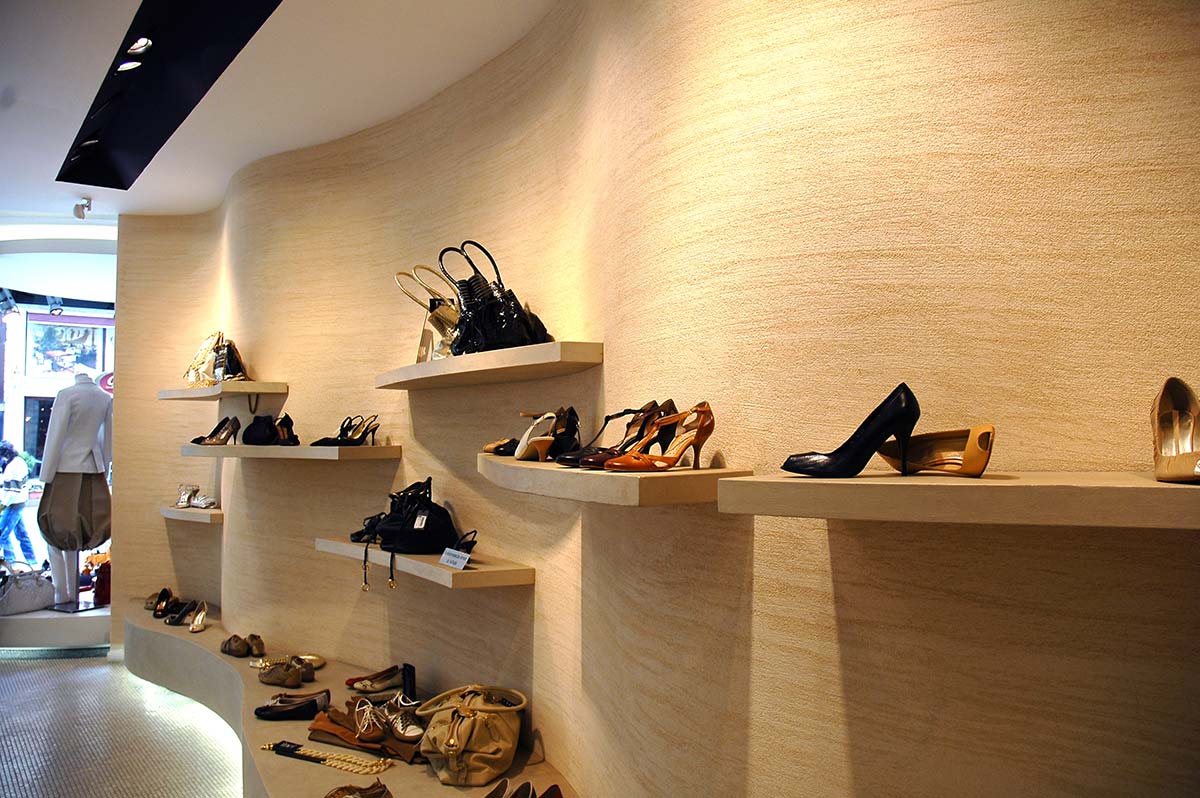
12 Jun Using polished plaster to enhance your company brand
Polished plaster creates a beautiful finish to any interior. It’s been used for hundreds of years, made popular in Venice during the Renaissance period. Venetian plaster is by far the most popular type of polished plaster, and for good reason. It’s a classic. It’s a plaster mixed with marble dust, which when polished, looks like real marble.
The finish itself is classy and undeniably luxurious. It’s become extremely popular in high-end retail environments for this reason. Pop into shops on Oxford Street or Savile Row, and you’ll find polished plaster in abundance.
Architects also love venetian plaster for its character. It reflects light beautifully when polished, making spaces appear bigger. It’s popular for smaller applications because of this, such as in changing rooms and corridors.
Suffice to say, if you want people to perceive your brand as upmarket or tasteful, polished plaster is an excellent interior design choice.
First impressions
Polished plaster makes an immediate impression. Venetian plaster looks like marble, but if that isn’t your thing there’s plenty of other finishes available. For instance, there’s Marmorino plaster, a lime-based plaster with metallic elements in it. These are gold, silver or copper, giving the plaster a unique tint.
First impressions matter. If you operate a business that relies on customers to enter your building, making the right first impression can be the difference between making a sale and not. Make a poor first impression and the customer might look elsewhere.
The same rings true for employees. If you have a high-end employment environment, for example, a renowned law firm or company HQ, employees expect a comfortable work environment. And yes, they will compare it to their previous employer’s too. So, whatever the function of your building, first impressions count.
Choose your colour
If colour is a big part of your brand (for example, red is a big colour to Virgin just as green is to Subway), you’ll be intrigued to learn you can tint plaster any colour you like. This means you can have walls that reflect your brand identify. The colour won’t be a perfect match, it’ll be a complementary colour, but it’ll work nether-the-less.
Lucidato is a popular polished plaster for tinting. This plater is composed of ultra-fine lime putty and polished to a very high gloss. It’s less grainy than Venetian plaster and is therefore a popular choice where continuity is desired.
You can alter the colour of a plaster in two ways. The first way is to change the stone content within the plaster (for example, adding a red stone powder will give the plaster a reddish or pink tint). The second way is to use a natural pigment. These are powdered and are available in a huge range of different colours.
The perfect backdrop for signage
Want your interior signs to stand out? Perhaps you have a large logo displayed prominently above the reception desk, or a slogan in your conference room. Whatever the case, polished plaster offers the perfect backdrop for signage. It gives anything bolted onto it a real sense of depth without distracting from the object itself.
If your signage is a dark colour, opt for a lighter venetian plaster. If your signage is a light colour, opt for a darker venetian plaster. By creating a contrast between your walls and signage, you’ll create something that stands out.
Because of its high gloss finish and luxurious appearance, we recommend you use polished plaster in areas that will be seen. It’d be a waste to apply it in a box room. If you have a tight budget, have polished plaster applied to walk in areas and communal rooms. If you operate a retail store, have it applied in the shop itself and the changing rooms.
Don’t forget about your lighting
Polished plaster has depth and character – and you can change the way it looks under different lighting. Bright lights bring out the different tones in the plaster mix, while dimmer direct lights give the plaster a much softer tone. The type of lighting you have in your building will also determine which polished plaster is best for you.
Light polished plasters, such as traditional venetian, are perfect for well lit rooms. A Marmorino plaster is perfect for dimmer rooms because of the metallic content, which is more reflective. Stone-look plaster is good for rooms with artificial lighting.
Interested in polished plaster to enhance your company brand? We are experts in decorative finishes and specialist plastering techniques. Call us on 0113 258 0387 to discuss your project and find out how we can help you.




No Comments